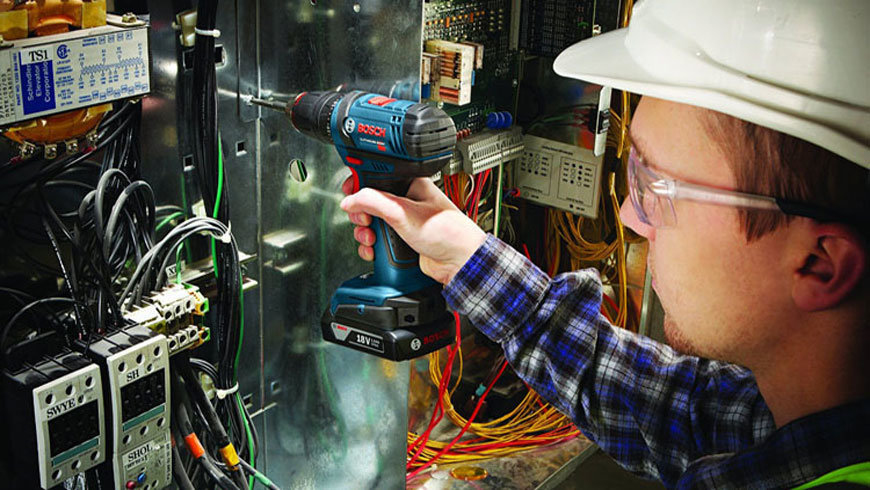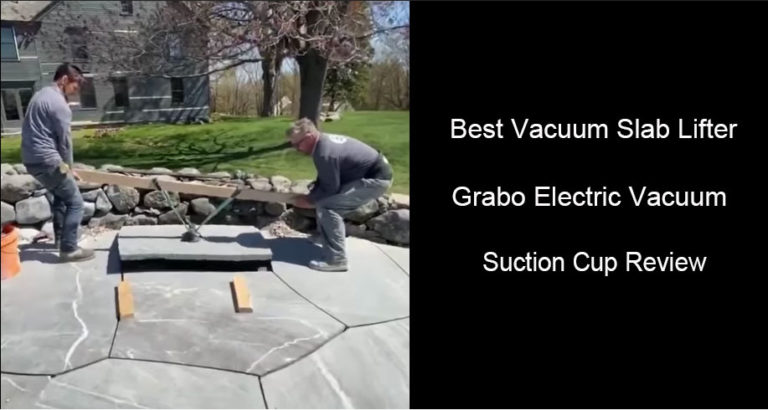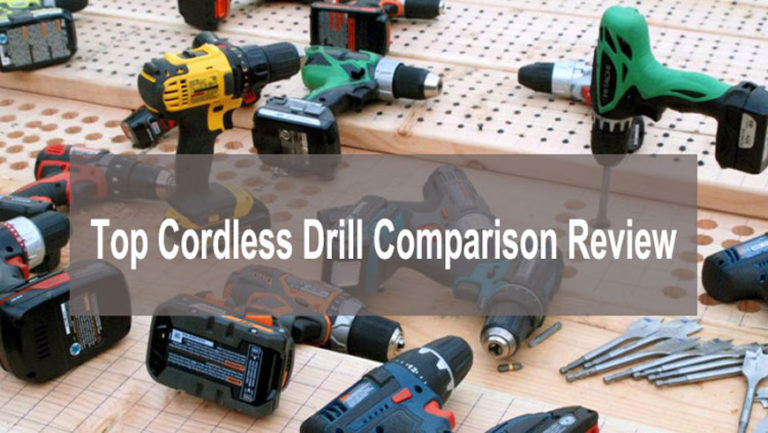A drill is a tool used for drilling the holes in materials like metal and wood with a drill bit or driver bit. Sometimes looking for a new drill can be difficult due to the many types of drills available. Not every person will require a powerful drill. Professionals may need to use a drill with a higher voltage; however, a homeowner will have different necessities. Understanding the difference between them will enable you to spend less cash and get the drill that will best suit your requirements. This short guide will clarify the various types of drills available in the market, and what they are best used for.
Type Of Power Source Drills
A corded or cordless standard drill is designed like a large pistol, with a trigger on the drill handle and a drill bit on the end . They’re the most fundamental type of drill and they can be used as a part of the amplest assortment of circumstances. Standard drills are useful for both drilling gaps and for driving screws . Those that need fundamental drilling and screw-driving capacity ought to consider these types of drills.
Corded Drills
There are different reasons that make corded drills better than cordless models. These incorporate general weight, no requirement for batteries and a settled cost. Cordless drills can be bulkier and heavier because of their battery pack. Furthermore, you should dependably have a reinforcement battery if the one you are using goes dead. In the end, as well, the batteries must be replaced which can be expensive.

In terms of power, corded drills give increasingly consistent torque. Although top-notch cordless models are available, corded drills are substantially more solid methods for drilling and driving. The bending power is powered by a steady flow of power, so there are no restrictions as far as voltage is concerned. If you ask a temporary worker or woodworker, if they have the alternative of using a corded drill, they quite often will.
Cordless Drills
As far as comfort is concerned, cordless drills are the best. Many cordless drills are delivered with a variety of highlights. A reversible drive and physically customizable grip ought to be standard on a cordless drill. Charged bits and various velocities are attractive on a cordless drill. Their power is controlled by the voltage put away in their batteries. Cordless drills commonly from 9.6 volts up to 28 volts. The lower the voltage, the less powerful the drill.

Where cordless drills exceed expectations is their capacity to move with you. Given the battery is all around charged, cordless drills are unrestricted by a dangling string. Contingent upon the activity, this is invaluable. They make astounding auxiliary drills for temporary workers and do-it-yourselfers alike. While a corded drill will quite often be utilized for genuine drilling or overwhelming obligation driving, a cordless model is perfect for convenient solutions in difficult to-achieve places. Cordless drills are a decent tool to keep around the house for little family occupations. With an additional battery continually charging, they are never without power. Furthermore, on the grounds that they are at times utilized for broad work, you don’t need to put their engines through a great deal of stress. Leave that for the high-torque corded drill.
Types of different design drills
Various types of drills come in different designs. Let’s have a look at the main designs available:
Braces drills
A woodworker’s brace has a ‘U’ formed wrench/outline that is utilized to transform the hurl and drill into wood. The breadth handle of a brace gives more use which enables the brace to create more torque than a hand drill. The scope handle of a brace causes it to produce more torque than a hand drill, because of it having a more prominent separation from the focal point of revolution so giving more use than the turning handle of a hand drill . Wood screw bits can be utilized with a brace to drill vast distance across gaps.

The more noteworthy torque connected to the bit in the hurl improves braces suited than hand drills for use with a twist drill bit for drilling huge distance across gaps in the wood. Selection of screwdriver bits that can be utilized with a brace to drive screws into or expel them from a workpiece.
At the point when utilized with a screwdriver bit, the extra torque that a brace can apply makes driving long screws into hardwood less demanding than it would be with a hand drill.
Pros:
• Can produce more torque
• Better for drilling bigger width gaps
• Better to drive long screws into hard material
Cons:
• Slower turning speed implies employments can take longer
• Not also suited to drilling materials, for example, metal which requires a high cutting pace
Hand drills
A hand drill has a turning handle connected to a drive wheel, which turns a pinion adapt that pivots the drill bit. The drive wheel of a hand drill is considerably bigger than the pinion equipped which along these lines expands the turning pace of the drill.
As the drive wheel of the hand drill is considerably bigger than the pinion adapted, it expands the speed at which the drill bit is turned. This expanded speed of the drill bit improves hand drills suited than a brace would be for drilling little openings in hard material, for example, metal, which require a higher cutting velocity.
Hand drills turn speedier than braces which can spare you time on a few jobs. As the throw and bit held inside it are pivoted speedier than with a brace, hand drills can drive little screws into soft material faster, sparing you time.

Pros:
• Higher turning speed implies a few employments take less time
• Better at drilling metal and different materials that require a higher cutting velocity
Cons:
• Generates less torque
• Not also suited to drilling expansive breadth gaps
Types of drills
There are four types of drills you can look over. Beneath, we have sketched out the key highlights of each drill type and the types of jobs they are most appropriate too with the goal that you can identify which choice is ideal for you.
Combi drills
This drill is practically indistinguishable to the drill driver; the Combi drill has an extra component that makes them perfect for drilling into harder materials – behind the turning drill bit two ribbed, metal plates click in and out against each other, beating the drill bit forward. This usefulness makes the flexible Combi drill an astounding decision for your home. It successfully makes it two tools in one and means you don’t need to purchase each independently.
Some of our Combi drills have brushless innovation. This implies the engine has been developed such that it implies your tool can be smaller, less warmth will be produced, and it will be sturdier.

Combi drills highlights:
• Are cordless
• Have a power yield of up 20v
• Offer a no heap speed of up to 2000rpm
• Can offer up to 24+1+1 torque settings
Drill drivers
A standout amongst the most prominent types of the cordless drill is the Drill Driver which is proficient in driving latches and drill through different types of materials like wood, block, metal, et cetera. This is likewise simple and advantageous to use as it can without much of a stretch fit in your hand and you can move it rapidly starting with one target territory then onto the next.
In any case, there is one little disadvantage with this drill which makes it somewhat difficult to utilize. It is marginally huge in the measure which settles on it a terrible decision for tight spaces however if you overlook this little glitch, at that point, this is the ideal drill for the vast majority.

If you’re searching for an adaptable alternative that will adapt to all the little occupations in your home, investigate our scope of drill drivers and effect drivers. These drills, not just drill openings into materials, they likewise go about as drivers – this implies they can extricate and fixing screws.
Using different types of drill and screwdriver bits implies that you can utilize these drills on different materials, and additionally utilize it to do different undertakings like to set up racks or collect level pack furniture.
Drill drivers features:
• Are cordless
• Have a power yield of up 18v
• Offer a no heap speed of up to 3200rpm
• Can offer up to 24 torque settings
Pistol grip hand drills
Pistol grip hand drills are have a handle on in your non-prevailing hand just like a pistol and the turning handle is then turned with your overwhelming hand. Pistol grip hand drills don’t have a straight handle .
The pistol grip model design is said to provide more control when performing little, complex drilling, while the encasing keeps soil out of the workings inside. This makes them more reasonable to littler, more sensitive drilling occupations.

Dissimilar to present day plastic pistol grip hand drills vintage pistol grip hand drills were made of steel or iron and hand the apparatuses of the drive haggle uncovered.
Save drill bits can be put away in a removable compartment on some pistol grip design hand drills. The pistol grip and encased packaging are made in two sections that screw together. Some components a removable compartment between the two parts that can be utilized to store save drill bits.
Features
• Ideal for all broad modern and support drilling assignments
• Drilling opening ability to 13mm (1/2″) it. (in steel)
• Best ergonomic shape – single and two-handed utilize
• Use of side handle suggested for bigger drills with high torque response
Hammer drills
A decent cordless drill for professionals who work with metal, cement, and wood regularly is the Hammer drill. This type of drill , for the most part, pushes forward and pivots which makes it more productive in driving latches and drilling through the brickwork materials. A hammer drill requires more vitality and generally measures substantial which influence it to unfit for home utilize and mainstream for professional utilization.
Fundamentally the same as the SDS drill, hammer drills are truly powerful drills that work by conveying a fast progression of blows particularly designed for drilling in workmanship or shake. The key difference between a hammer drill and an SDS drill is that hammer drills don’t enable you to utilize the hammering activity without pivot – so they can’t be utilized for etching.

The hammer drill utilizes customary drill bits and can be utilized for different materials, for example, stone, brickwork, wood, and metal. The main material for which a hammer drill isn’t appropriate is concrete.
Hammer drills features:
• Can be corded or cordless
• Offer a power yield of up to 1010W (corded) or 18v (cordless)
• Offer a no heap speed of up to 2000rpm
• Can offer up to 51200bpm
Drill Press
Another awesome drill type for home and little wood ventures is the drill Press. This type of drill has higher torque than a drill driver which makes it more effective in introducing and expelling nuts, screws, and so forth. Its size is likewise more minimal than the standard drill drivers which make it very valuable in tight spaces also. Be that as it may, since this drill packs a considerable measure of power in itself, it isn’t perfect for drilling gaps however an incredible tool for unpleasant carpentry work is as yet.

Features
• Multi-Spindle Speeds
• feathering trigger for speed control while drilling
• are non-reversible for blunder free operation
SDS Drills
Also called the rotational hammer drill, an SDS (Self Direct System) drill is perfect for drilling through stonework and cement. They have a hammer work that beats the drill bit as it pivots, helping them travel through the denser materials. Also, you can isolate out the pivot from this hammer work, enabling you to just drill through lighter materials. Or, on the other hand, you can kill the pivot and utilize an etch bit to help wear down your block or solid dividers – this is useful if you have to make a station in a divider to shroud wires or links.
The unrivaled quality of the SDS drill makes it bulkier and not as simple to use for the more typical DIY undertakings in your home.

The SDS drill utilizes unique SDS drill bits and is designed for drilling in stone, brickwork and particularly concrete. A few SDS drills additionally have an etching capacity, so you can expel layers of material like cement or concrete. For drilling in materials, for example, wood and metal an exceptional SDS toss connector are required, so standard drill bits can be utilized.
SDS drills features:
• Can be corded or cordless
• Offer a power yield of up to 1500W (corded) or 240v (cordless)
• Offer a no heap speed of up to 1500rpm
• Can offer up to 6200bpm.
Conclusion
The above types of drills are the best that you can choose from. Picking the correct drill bit for the task is the most important part of any application. Regardless of whether it’s matching the suitable piece to the substrate material, getting the correct match for the depth and diameter of the hole, or even the volume of work required, the correct decision can extend the life of your drill bits. This thus enhances efficiency by enabling you to get more work done with each drill bit. Make an informed decision when choosing the types of drills and enjoy your working experience.




![Ozito Drill Press Review with WEN Drill Press [Affordable Price]](https://www.powertoollab.com/wp-content/uploads/2021/07/Ozito-Drill-Press-Review-768x474.jpg)